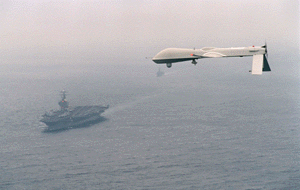
UAVs SUCK: Why They Don't Work As Advertised--Can't Get Enough into the Air, Can't See Squat, Constantly Crashing!
 www.youtube.com/view_play_list?p=124CDA0F9DA6B56B
www.youtube.com/view_play_list?p=124CDA0F9DA6B56B
When an UAV actually spots a bad guy the MICC-TT beats its chest as if something "extraordinary" happened when manned observation/attack aircraft not just spotted but killed bad guys DAILY in Vietnam! We used to have over 300 x O-1 Bird Dogs and O-2 SkyMasters and dozens of OV-1 Mohawks and OV-10 Broncos we could put into the air AT THE SAME TIME.
DETAILS:
reocities.com/usarmyaviationdigest/grasshoppersmustreturn.htm
Now we think we have "broken the speed of light" by putting up a couple DOZEN UAVs! What a bunch of retards we are in the U.S.! 25 x UAVs? That's it? Iraq is the size of Texas. Afghanistan is even bigger. No wonder we cannot stop land mines from being laid...there's no continuous air surveillance pressure! 24/7/365 air surveillance and attack is needed to prevail in sub-national conflicts...we just don't get it or want to get it thanks to pilot egos who are threatened by observation/attack aircraft....nevermind THEY WOULD BE THE ONES TO FLY THEM! If its not Mach 2 fast or rotorhead too slow, the current egomaniacs are not interested...which is why we try to work around them with UAVs....
EXCERPT:
NY Times June 5, 2008U.S. Pushes to Rely More on Remotely Piloted Craft
By THOM SHANKERWASHINGTON - Early last year, the Air Force was able to keep no more than 11 of the remotely piloted, armed Predator surveillance aircraft flying over Iraq and Afghanistan at any one time. By this past Sunday, that number had more than doubled to 25, and Air Force officials now say they can guarantee at least that many of the hunter-killer aircraft will be aloft around the clock, a new element of the buildup in American forces for the two wars. The push to increase missions by the Predator, and its larger and more deadly variant, the Reaper, has been an issue of serious contention between Defense Secretary Robert M. Gates and the armed services, in particular the Air Force. Mr. Gates has complained that it has been "like pulling teeth" to get more intelligence, surveillance and reconnaissance vehicles into the war zones.
The problem with any unmanned recon system is its narrow "Soda Straw" field of view and inability to investigate with the vigor and certainty of air and ground human scouts to collect actual intelligence (HUMINT). UAVs do not have the self-preservation instinct of a manned platform to prevent crashes and collisions, evade enemy fires and are easily shot down.
Callous Disregard for Human Life: RMA Neocons Murder Civilians with UAVs, Wonder Why No one Takes Talk of "Democracy" Seriously?
America is making enemies all over the world with our callous disregard for human life and desire to showboat technology and feed greed. Unmanned systems murdering civilians is counter-productive to winning hearts & minds and actually makes more rebels. Man must be in the loop so accountability can be leveled at someone not that "we couldn't see". For example, the My Lai massacre was stopped when an Army helicopter crewman saw what was going on.
The light infantry narcissists trying to truck-hop and foot-slog creates an over-reliance on air strikes because they have a glass jaw unwilling to on the ground wade into situations to differentiate friend/foe. The rebels run into a village last seen at building x, too-fast fighter-bomber (manned) or UCAVs (unmanned) then destroy building x killing innocent civilians which feeds the rebellion.
The answer is Morice Line security fences to keep bad guys out backed by quick reaction force M113 Gavin light mechanized infantry that can wade into problems with armored maneuver, isolate the rebels from the bad guys assisted by MANNED observation/attack aircraft that can "bird dog" ahead and keep the pressure on 24/7/365 without killing civilians. A scalpel for SNCs instead of a plastic whiffle ball bat (light infantry) and dropping pianos (too-fast fighter-bombers). UAVs and UCAVs are unsound. We need MANNED O/A aircraft with remote piloting as an option for NSWs where air defenses might be too dangerous. In SNCs, we must have DISCRETION from manned pilots and observers.
www.breitbart.com/article.php?id=080914170537.km3umg94&show_article=1
U.S. drones bring fear and firepower to Qaeda war in PakistanSep 14 01:05 PM U.S./Eastern
Two air-to-ground missiles ripped through the sky before smashing into the house where a Taliban leader with close links to Al-Qaeda chief Osama bin Laden was thought to be hiding.
"There was a glittering flash of light and a prolonged roar," said Hameedullah Khan, one of the first on the scene of Monday's suspected U.S. drone strike in the Pakistani town of Dande Darpa Khel, near the Afghan border.
Two white drones circled the area for hours ahead of the attack that left 21 people dead, including women and children, residents told AFP.
"We recovered 10 bodies. Some were mutilated, some charred. We could not identify if the victims were locals or foreigners. But we could distinguish that children were among the dead," Khan said.
Missile strikes targeting Islamic militants in Pakistan's rugged tribal areas in recent weeks have been blamed on U.S.-led coalition forces or CIA drones based in Afghanistan. Pakistan does not have missile-equipped drones.
In the past 12 days, five strikes have been carried out, targeting suspected Taliban or Al-Qaeda bases.
The reputed target of Monday's attack, veteran Taliban commander Jalaluddin Haqqani, was not among those killed, and the devastation left on the ground seems only to have strengthened the Taliban's influence on local civilians.
"After about an hour, the Taliban turned up," said Khan, who helped in the rescue work at Dande Darpa Khel.
"They ringed a building and erected a tent (to treat casualties) nearby," the 35-year-old said.
"Then they recovered more bodies and wounded who were sent to hospital."
Washington says Pakistan's mountainous tribal regions have become a safe haven for Islamic fighters waging an insurgency against international troops based across the border.
But the increasingly frequent missile attacks, for which the United States has not claimed responsibility, are straining Pakistan's relationship with its key ally.
Civilian deaths have stirred local anger and embarrassed the Pakistani government, already struggling to tackle the militancy that has seen 1,200 of its own people die in bombings and suicide attacks in the past year alone.
Pakistan's army, itself engaged in fierce clashes against militants linked to the Taliban and Al-Qaeda in the border regions, has also condemned what it sees as unilateral U.S. action that violates the country's sovereignty.
Residents in Dande Darpa Khel say until recently, one drone would comb the region late at night or early in the morning. But now, two or three will fly together, around the clock.
"They keep on flying in our skies with full immunity and people are scared," said Abdus Khan, a 22-year-old student, adding that the prospect of further attacks may lead people to flee the area.
The U.S. believes that Bin Laden and his deputy, Ayman al-Zawahiri, are hiding in the tribal regions, but Pakistan security officials say the increase in missile attacks is ineffective.
"Pakistan's army is fully-fledged in crushing Taliban and Al-Qaeda fighters," a senior military official told AFP.
"The Americans must show patience and let us succeed in our strategy. When they launch unilateral strikes it is only counter-productive," he added.
Riffat Hussain, head of peace and conflict studies at Islamabad's National Defence University, said the strikes were undermining the fight to combat militancy in the tribal belt.
"This is playing into the hands of the extremists, especially when civilian collateral damage is much higher than the actual damage the Americans think they are causing to militant outfits or sanctuaries," Hussain said.
"These attacks will further strain Pakistan's efforts to play up to its role as a key ally of the United States in the global fight against terrorism."
IF WE REFUSE TO EMPLOY AIR & GROUND HUMINT AND OUR UAVS ARE GETTING SHOT DOWN AND CRASHING, WHERE WILL THE RECON COME FROM?
Consider the UAV losses during Operation ALLIED FORCE:


TOTAL OFFICIAL UAV LOSSES (by June 3, 2000): 48 (49)
(According to a June 3 New York Times article "at least 21 drones" were lost by NATO during the war in Yugoslavia. Following the publication of this article another UAV loss was officially admitted by NATO on June 8. This brings the number of officially-acknowledged UAV losses to 22 aircraft. A July 6 article from the French Le Monde newspaper mentions that France lost a total of 5 UAVs, two CL-289s and three Crecerelles.)
Two articles published on the official U.S. Navy web site (http://uav.navair.navy.mil) and on Pilot Online web site report that at least 14 U.S. UAVs were lost in Yugoslavia, including 4 Pioneer types, three of which are believed to have been lost due to fire. Some 6 Hunter UAVs were also lost: 4 due to enemy fire and 2 because of technical failures. Four more U.S. UAVs were lost, three of which are Predator types (serial numbers: 95-3017, 95-3019, 95-3021).
Yugoslav military sources claimed 30 NATO UAV kills: 25 UAVs shot down by the 3rd Army air defenses (the 3rd Army was stationed in Kosovo under the command of Gen. Nebojsa Pavkovic), 3 UAVs were downed by Yugoslav Navy air defenses (information released by FRY Navy Commander, Milan Zec), and 2 UAVs were shot down by the 2nd Army air defenses (information released by Major General Spasoje Smiljanic). This includes only those UAV that crashed in Yugoslavia.
According to some sources, a fourth Predator UAV, serial number P-016 95-3016, crashed during the Operation ALLIED FORCE in May.
Shortly after the Phoenix UAV was exhibited at the Yugoslav Aeronautical Museum, government sources in Britain told the BBC that some 12 British UAVs were lost in the operation "Allied Force". The report by the British National Audit Office mentions a loss of twelve British UAVs. This brings the total number of confirmed UAV losses to 45-46. This is at least 15 UAVs more than claimed by the Yugoslav military officials.
United States: 17 (3 Predators, 9 Hunters, 4 Pioneers, 1 UAV of undetermined type)
Germany: 7 (presumably all CL-289 turbojet drones)
France: 5 (3 Crecerelle, 2 CL-289)
Britain: 14 (14 Phoenix)
4 UAVs of undetermined origin (possibly U.S., German, or Italian)
The IDF has also been hurt by over-using UAVs which gave away a planned ambush to the enemy, killing many of its Soldiers in a counter-ambush in South Lebanon.
We MUST have HUMINT capability via manned SR-71 high-performance penetration planes for nation-state wars and low-altitude observation/attack aircraft particularly for sub-national conflicts, stealthy light tracked AFVs, scout dogs and well-camouflaged foot scouts. Otherwise we will continue to blow up decoys and civilians--and not the bad guys. In Afghanistan, the UAVs continue to crash, get shot down and not see much.


The U.S. Army Center for Army lessons Learned (CALL) Afghanistan report reveals that UAVs have weather limitations that prevent them from flying at all:
http://call.army.mil/products/handbook/02-8/02-8ch2.htm
"Weather Limitations
The weather must be considered in developing the collection plan. If any of the following conditions are present, the mission will not launch:
Ceilings of 6,000 feet or less will prevent collection during mission.
Winds: Headwind of 35 knots, tailwind of 3 knots, and crosswind of 20 knots.
Winds aloft of greater than 50 knots.
Lightning within 10 nautical miles.
Ice."
A U.S. Army Master Aviator notes about manned recon platforms:
"Any helicopter we have now certainly can operate in this environment, but it will be a bumpy ride in a OH-58D. Eventually UAV's will be able to operate in this environment, but it will be a while, and the dreaded software monster (the same one that is eating RAH-66) could easily get an appetite for UAV."
VIDEO: UAV Shoot-Downs!
BS Predator UAV vs. Iraqi MIG-25, Predator loses...
 www.youtube.com/watch?v=wWUR3sgKUV8
www.youtube.com/watch?v=wWUR3sgKUV8
Hermes UAV vs. MIG-29; Hermes loses!
 www.youtube.com/watch?v=5TK-gi6YUoY
www.youtube.com/watch?v=5TK-gi6YUoY
Washington Post
March 26, 2002
Pg. 1
Beaming The Battlefield Home: Live Video of Afghan Fighting Had Questionable Effect
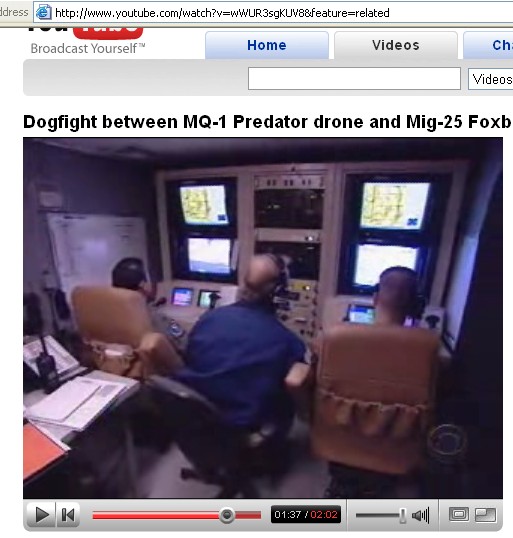

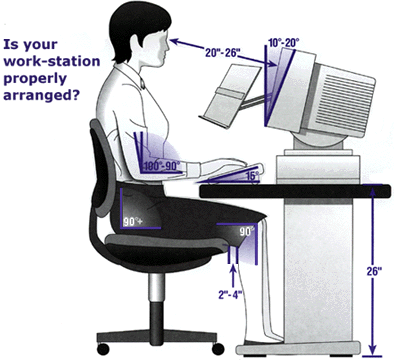
"Oh, my aching eyeballs want to explode!!!"
By Thomas E. Ricks, Washington Post Staff Writer
BAGRAM AIR BASE, Afghanistan, March 25 -- During fighting this month between U.S. troops and al Qaeda forces, Predator drone aircraft gave generals and civilian leaders back in Washington something they had never seen before: a continuous live view of Americans in ground combat in the mountains of Afghanistan, 10 time zones away.
Cameras on the 27-foot drones beamed back dramatic scenes from the heat of battle in the Shahikot region, notably the killing of a Navy SEAL commando. Never before had an extended battle by U.S. forces been piped into U.S. command centers around the globe in hour after hour of real-time video that made distant officials feel unusually close to the battlefield. And that was one of the problems, according to U.S. commanders here. In a review of the Predator's role in the biggest U.S. ground assault in a decade, Soldiers involved in the battle said the live video links gave them little useful information and were sometimes a distraction, encouraging higher-level military staffs to try to micromanage the fighting.
"Tactically, I don't think it affected what I did on the ground," said Army Col. Kevin Wilkerson, a 10th Mountain Division brigade commander who led the regular Army forces in the battle. "To be honest with you, I didn't watch it a lot," he added. The reason, he said, is that "the Predator can be mesmerizing -- like watching TV."
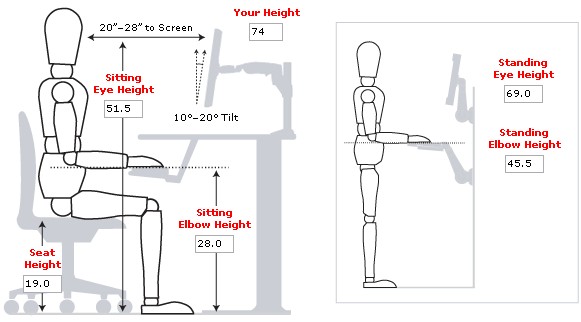
Maj. Louis Bello, a fire support coordinator for the division, said the video tends to be seductive, fixing the attention of its viewers on whatever it shows. "The danger is you get too focused on what you can see, and neglect what you can't see," Bello said. "And a lot of the time, what's happening elsewhere is more important."
For example, he said, the Predator may beam back an image of two tanks moving, capturing the attention of people watching -- but it might not notice several hundred enemy troops hiding nearby who are more threatening. Bello called Predator video "fraught with both blessings and curses."
Another 10th Mountain Division officer, who asked not to be identified, went further, dismissing the Predator as "entertainment for division staff," the people at headquarters.
Since the dawn of warfare, military commanders have felt they lacked the proper information to direct their forces. In ancient times, everything over the next hill was often a mystery; now, Predators can let them peer over that hill and the one after that, and the problem is how to sift through the information quickly and find what is useful.
Among the first troops that the U.S. Central Command dispatched to Central Asia after the Sept. 11 terrorist attacks were Predator teams sent to Uzbekistan and Pakistan. These drones were operated by the military and used purely for reconnaissance; the CIA controlled a separate set of Predators that recorded another first in military history, the firing of weapons by an unmanned aircraft.
Pictures from the military-operated Predators have been distributed to a variety of command posts around the world, including the air operations center in Saudi Arabia, Central Command headquarters at MacDill Air Force Base, Fla., and the Pentagon and CIA headquarters in the Washington area. Army Maj. Gen. Franklin L. "Buster" Hagenbeck, the commander of regular U.S. ground forces in Afghanistan, said in an interview that from his perspective, the biggest problem caused by the Predator was that its transmission of real-time images made staffs above his own division's staff feel they were in a position to get involved in the battle. "It proved at first to be disruptive" to his headquarters when levels of command above -- in the Persian Gulf, at U.S. Central Command headquarters in Tampa and at the Pentagon -- watched Predator imagery and called with questions about what they saw, he said.
During the first days of the Shahikot battle, Hagenbeck recalled, "People on other staffs at higher levels would call all the way down to my staff and get information and make suggestions, or they were pulling information for details that they presumed their bosses would want to know." The answer to that micromanagement problem, he said, was to anticipate questions and answer them by posting detailed battle reports several times a day on the military's own secure, internal computer link. After his staff started doing that, he said, the higher staffs "started backing off."
The initial conclusion of officers here is that the Predator, in its current configuration, is probably better suited to narrow tasks, such as shooting missiles at small convoys of al Qaeda leaders, than at helping commanders manage a far-flung battle.
Military experts said problems are to be expected as part of the settling-in process during the introduction of any radically new technology. "This happens frequently when new . . . technologies like Predator are introduced," said Michael Vickers, an expert on military innovation at the Center for Strategic and Budgetary Assessments, a Washington research organization.
Wilkerson emphasized that he sees some uses for the Predator, especially in planning attacks. "What it did do is prepare us -- when we went into that valley, we knew where to go," he said. This allowed ground forces to maintain a faster pace of operations when they moved in -- a key advantage in keeping an adversary off-balance.
"We had pinpointed the caves, so we could do in a day and a half what could have taken a week and a half," he said.
Several people involved in overseeing the battle also said the Predator would be far more useful to them if they could communicate directly with its operator, as they can with the pilots of attack helicopters and fighter jets. The Predator operator can be sitting hundreds or thousands of miles away.
If the Army can "figure that out, it would be a great asset," said Maj. Brad Herndon. "There's no doubt it's a good system. But we need to refine how we use it."
For all of the problems, said Sgt. 1st Class Roger Lyon, a 10th Mountain Division intelligence specialist, the Predator is still a nice thing to have in combat. "It's a comforting sound on the battlefield, when you're going to sleep and you hear that sound of the Predator engine, somewhere between a propeller airplane and a lawn mower, knowing it is looking out for you."
Staff writer Bradley Graham in Washington contributed to this report.
Even the USAF has had to grudgingly admit recently that it needs men on the ground to control air strikes:
European Stars and Stripes
August 15, 2002
Afghanistan War Showing Air Force The Importance Of 'Eyes On The Ground'
By Lisa Burgess, Stars and Stripes
ARLINGTON, Va. - Afghanistan has added a "new wrinkle"; to the Air Force's basic doctrine, according to the service's top analyst for the war on terrorism: Wars aren't won by air alone.
The rugged and unforgiving mountains of Central Asia have revealed many hard truths to each of the services. But for the Air Force, perhaps no single lesson resonates more clearly, Col. Fred Weiners said Tuesday: "Eyes on the ground" are essential to round out the advanced space- and air-based sensors, weapons and platforms that make up the service's inventory.
"You can have all the high technology you want, but it's these 25-year-old staff sergeants on the ground making strike decisions" that, according to Weiners, have in the past been made by high-level planning officers located nowhere near the battlefield.
Weiners is acting director of the Air Force's Task Force Enduring Look, and spoke with Stripes in an interview in his office in Arlington, Va.
Air campaigns traditionally have been planned in advance. Coordinates have been known, and target sets could be chosen from data gathered weeks or months in advance.
To hear an Air Force official emphasizing the need for "boots-on-the-ground" is a significant shift in conventional U.S. military thinking.
The Army and marine corps both are founded on the principle that war is never won until "boots-hit-the-ground" - when military personnel actually occupy the turf. The Air Force has tended to be dominated by officers who believe air operations alone can conquer an enemy.
In Afghanistan, however, forward air controllers and special operations forces -not planners sitting in Washington with maps and satellite photographs - have been responsible for almost all critical targeting calls, Weiners said.
"They are our most versatile and highly sophisticated sensor, and they are proving highly effective," Weiners said. "They dramatically enhance overall air power and bombing effectiveness."
Thanks to ground controllers, "We've enjoyed an accuracy like we've never enjoyed," Weiners said - and not only due to more sophisticated "smart" bombs, such as the Joint Direct Attack Munition.
Sensor-To-Shooter Loop
But Afghanistan also revealed a critical break in this "sensor-to-shooter" loop: Air Force pilots had not had enough practice working with the ground operators, particularly the special operations forces.
The service has moved with extraordinary speed to remedy that deficiency, Weiners said.
His task force first identified the need for more pilot training with ground forces in January, and by June, pilots at the Air Force Weapons School at Nellis Air Force Base, Nev., were "engaging special operations forces on the ground, including full mission profiles and simulations, to replicate what we were doing [in Afghanistan]."
Not every lesson coming out of Afghanistan is revolutionary. Much of what the Air Force is gleaning validates tactics and technologies that have worked well in exercises, but never have been proven in combat, Weiners said.
One especially critical validation to come out of the Central Asian campaign is proof that the Air Force's Air and Space Expeditionary Forces, which were designed for peacetime, also work in war, Weiners said.
As the Defense Department continued to pull back from its overseas bases throughout the 1990s, Air Force leaders decided they needed a way to keep the increasingly home-based service ready for action.
C-17 Proves Itself
One example: Afghanistan is the first major conflict for the Pentagon that has required "everything to come in and out by air," Weiners noted.
The Air Force's newest transport, the C-17, was key, Weiners said.
"The C-17 really proved itself, given the austere nature of our bases" in Central Asia, he said.
Creative aircrews also have found ways for the C-17 to perform that its designers never anticipated, Weiners said, citing in particular its function as a "mobile filling station."
Afghanistan has no fuel supply infrastructure, and roads there are so treacherous that trucking large amounts of fuel in is out of the question.
That means every drop of aviation gas and jet fuel needed by the U.S. forces is supplied by the Pentagon's fleet of KC-10 and KC-135 tanker aircraft.
Meanwhile, Army and marine helicopters and the assorted special operations aircraft stationed at the rough airfields that dot Afghanistan "need a lot of gas," Weiners said.
During Operation Anaconda in March, when fuel was at an absolute premium, an unknown airman came up with a novel idea to get fuel to the fighters quickly: Combine the C-17's ability to land almost anywhere with its large fuel tanks.
"We would park a tanker in an orbit, and the C-17 would go up, tap the tanker, land and off-load the fuel - and now you have avgas [aviation gas]" where tankers can't land, Weiners said.
Bombers With Eyes
Another much-discussed evolution was the decision to use of Cold-war era strategic bombers in tactical combat.
The Air Force's B-1, B-2 and B-52 bombers all were originally designed to deliver nuclear munitions in end-of-the-world scenarios.
In Afghanistan, however, Air Force officials took advantage of the bombers' extensive payloads, range and high-altitude capability to deliver lethal strikes on enemy forces - all while being directed by ground-based forces.
The bombers proved very effective, Weiners said.
"The B-1s and B-52s flew approximately 10 percent of the sorties and delivered close to 60 percent of the weapons," Weiners said.
During the Gulf War, B-52s dropped some 30 percent of all U.S. bombs. Neither the B-1 nor the B-2 was deployed.
One reason for that is the versatility of the bombers: They can carry traditional "dumb" bombs, but thanks to modifications, they also can deliver a range of smart weapons.
Secondly, all this can be done with greater standoff. The bombers fly much higher than fighter craft with no need for a visual, using coordinates from forward air controllers - the eyes on the ground.
Change comes with difficulty for the military; it's a "risk-averse group," Weiners said.
But, he said, "this is a great time to question the old way of doing things."
U.S. Army UAV debacle: Its AOK in DoD's mind to have UAVs and UCAVs "in-a-box", why not manned aircraft, too? Who are the ones here not "thinking out of the box"?
http://ebird.afis.osd.mil/ebfiles/s20040816312489.html
Pilotless Plane Guides 82nd
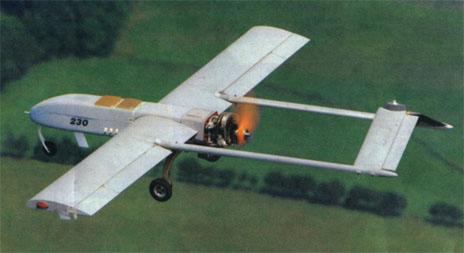
Fayetteville (NC) Observer
August 13, 2004By Kevin Maurer, Staff writer
A plane that is too small to carry a pilot and does not have any weapons is expected to make the 82nd Airborne Division more deadly.
The Shadow 200 is the latest in unmanned reconnaissance planes. It will allow the 82nd to scout targets, call in artillery fire and track the enemy without placing paratroopers in danger. Adding the unmanned planes to the 82nd's arsenal is part of the Army's efforts to streamline and update its fighting force.
The 82nd, like the rest of the Army, is incorporating the lessons it learned in Iraq as it prepares for its next deployment. Part of what it learned is the usefulness of the unmanned reconnaissance planes.
"It makes the division much more lethal than it has been in the past. It doesn't allow the enemy to know we are coming. They can not hide," said Capt. Matt Gill. He worked with the vehicles in Iraq.
"It can provide on-time, real-time target description. We can put intelligence that is only seven minutes old in the hands of a battalion commander," he said.
Gill said a unit from Fort Hood, Texas, that operated the planes was attached to the 82nd while it was deployed in Iraq. They gave the division the ability to track insurgents who attacked the division and get intelligence about them before Soldiers attempted to capture them.
Next time, the 82nd will have its own planes.
Two platoons from the 313th Military Intelligence Battalion are training with the aircraft. Each platoon has two planes. By 2006, the division will have five platoons operating the reconnaissance planes.
Gill says having the planes as part of the division instead of attached to it makes a big difference.
"We can support more customers and spread our coverage," Gill said.
Smaller than Predator
The Shadow 200 is smaller than the more widely known Predator.
Unlike the larger versions, the Shadow can not be armed.
The plane resembles a high-speed radio controlled plane. The propeller-driven aircraft is powered by what is essentially a souped-up lawn mower engine and sounds like a gas weed trimmer when it is airborne.
The plane is flown and landed by remote control. The system can be deployed anywhere using three C-130 aircraft.
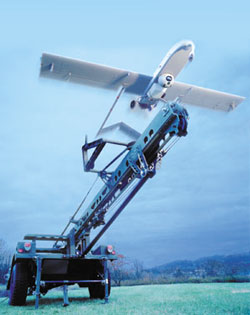
The Shadow takes off and lands like a fighter on an aircraft carrier. It is shot from a ramp and lands by catching one of four wires stretched across a runway. A net at the end of the runway acts as a failsafe.
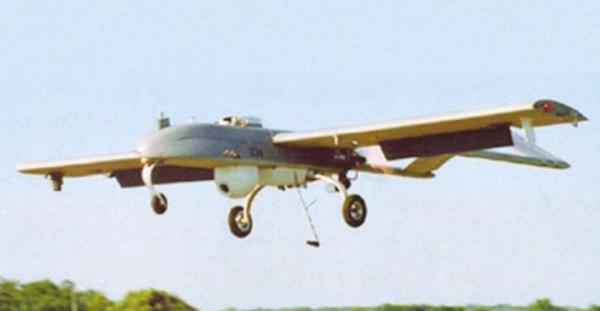
The whole operating system - which includes two planes - costs about $36 million. The aircraft costs about $275,000.
Most of the Shadow pilots are volunteers.
"It is more of a rush that you are in control of something in the sky," Pfc. Ryan Evans said.
The Shadow is flown mostly by choosing commands on various menus. For security reasons, the Paratroopers would not say exactly how the vehicle is flown. They did say that being good at video games is not necessary. "I am sure it wouldn't hurt if you can read instruments," Pfc. Josh Reed said.
One of the hardest parts of flying the unmanned planes is being aware of what is around you. "You are limited because of the camera," Sgt. Zeke Jaramillo said.
Chief Warrant Officer Darren Strock has worked with unmanned planes for more than nine years and has seen the technology and capabilities improve.
Strock said that in the end the vehicles make Soldiers safer. "Any time I can see what is behind the door for the guy kicking in the door, that is saving a life," he said.
A PICTURE OF ALL THAT'S WRONG WITH THE U.S. ARMY IN 2004...TO THE PRESENT DAY!
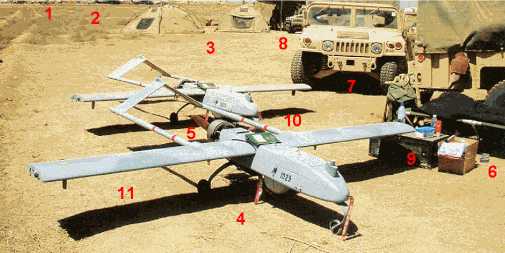
1. Operating from a fixed, static air base that the enemy can easily attack
2. Army helicopters in Fulda Gap green in tan desert Iraq
This Army pecking-order "rear area" pogue unit has not dug itself in or is prepared to fight off an enemy attack, one mortar landing here will kill everyone and their $36M UAV system. THERE ARE NO "SAFE" "REAR" areas on the non-linear battlefield.
4. Shadow 200 UAV, sky gray color good (why can't Army helos be in this color?), everything else is BAD, narrow field of view sensors relays info 10 minutes late back to base, $36M cost
5. Uses MOGAS! Unsafe! Where will this MOGAS come from when the rest of DoD is using safer JP8?
Engine is LOUD; enemy will hear UAV, hide and go back to business. Enemy has 10 minute data relay delay head start anyway
6. The pogue Army Soldier is sleeping exposed on a cot!
7. Unit that thinks its a non-combatant, drives around in TAN HMMWV trucks; does the enemy buy into this fantasy?...the color is good, rest is bad. No armament on truck top. No armor protection...
8. Rubber tires easily shred and burn, all carrying $36M UAV system
9. Soldier has to buy his own baby-wipes because Army log system can't supply him one in his MRE or with every hot meal
10. Note that the Shadow 200 TM manuals are on top to show superiors that everyone is following procedures like good little, weak co-dependants and if one of these Shadow 200s crashes, we can CYA
11. Notice UAV is fixed-wing, now WHY is that? Why not a helicopter? Is it because rotary wings are inefficient and hard to maintain and are failures? Nahh, we can't admit to that. So we hide this by having UAVs instead of pilots flying in effective fixed-wing observation/attack aircraft.
Chuck Myers writes:
"My observation: Here we go again; a significant batch of 82nd troops are destined to become non-combatants thus further aggravating the 'tooth-to-tail' problem (less trigger pullers). The pilotless support crews eat/drink water/are targets, etc. The logisics burden just increased. Need more C-130s which are already overbooked; need special fuel, parts, technicians, etc. The cost of operating the 82nd just increased a significant amount. Where is the analysis that portrays the benefit vs burden for such operations or is that 'old think' to even ask such a question?"
My observation:
So here we have two narrow field-of-view model planes that cannot attack the enemy for $36,000,000.
When for the same money we could have 18 x AY-65 Vigilante armored and armed crop dusters with human observation powers of two people, a pilot and an observer, PLUS infared, image intensifier optical sensors.
Do the math.
18 aircraft beats two.
18 armed aircraft beats two that cannot attack (0).
18 sensor platforms beats 2.
18 platforms with 36 humans with sensors beats two without human sensors (0).
18 platforms with 36 humans with a vested interest in returning to base intact beats 2 platforms with no survival instinct that will soon crash.
I guess we are stupid and just don't want to do what it takes to win the war in Iraq. We want to play with technotoys as our men get clobbered on the ground below because the enemy without any air surveillance is free to ambush with RPGs, roadside bombs and AK47s. Man! What a waste of money.
When will the USAF admit that we need GROUND MANEUVER to win wars?
Or that slower-flying MANNED, armored observation/attack aircraft are needed to do CAS and effective battlefield COIN?
The X-45 UCAV will be unmanned "fall guy" to do dirty work of making enemy Air Defenses reveal themselves to clear way for manned fighter-bombers to strategic bomb with some token USAF FACs and SOF on the ground shining laser beams so USAF can get the glory.
However, X-45 UCAV will neither be agile or observant enough to do CAS to enable ground MANEUVER. It will have problems like most UAVs have of simply not flying themselves into the ground.
The answer is:
CAS/MAS Air-Ground Team
A-10s in a "Cactus Air Force" guided by USAF FACs for CAS
Army helos and U/MCAV "Killer Bees" flying Maneuver Air Support (MAS) guided by Army Attack Pathfinders
FEEDBACK!
An Army analyst writes about the army's $36 million UAV "bargain":
"And it's data is SEVEN minutes old (best case), what a waste. Maybe we can convince the bad guys to stay put for 10 minute blocks of time, maybe offer them coffee as their setting up their IEDs."
A Navy officer writes:
"My sentiments exactly. Stay on target!"